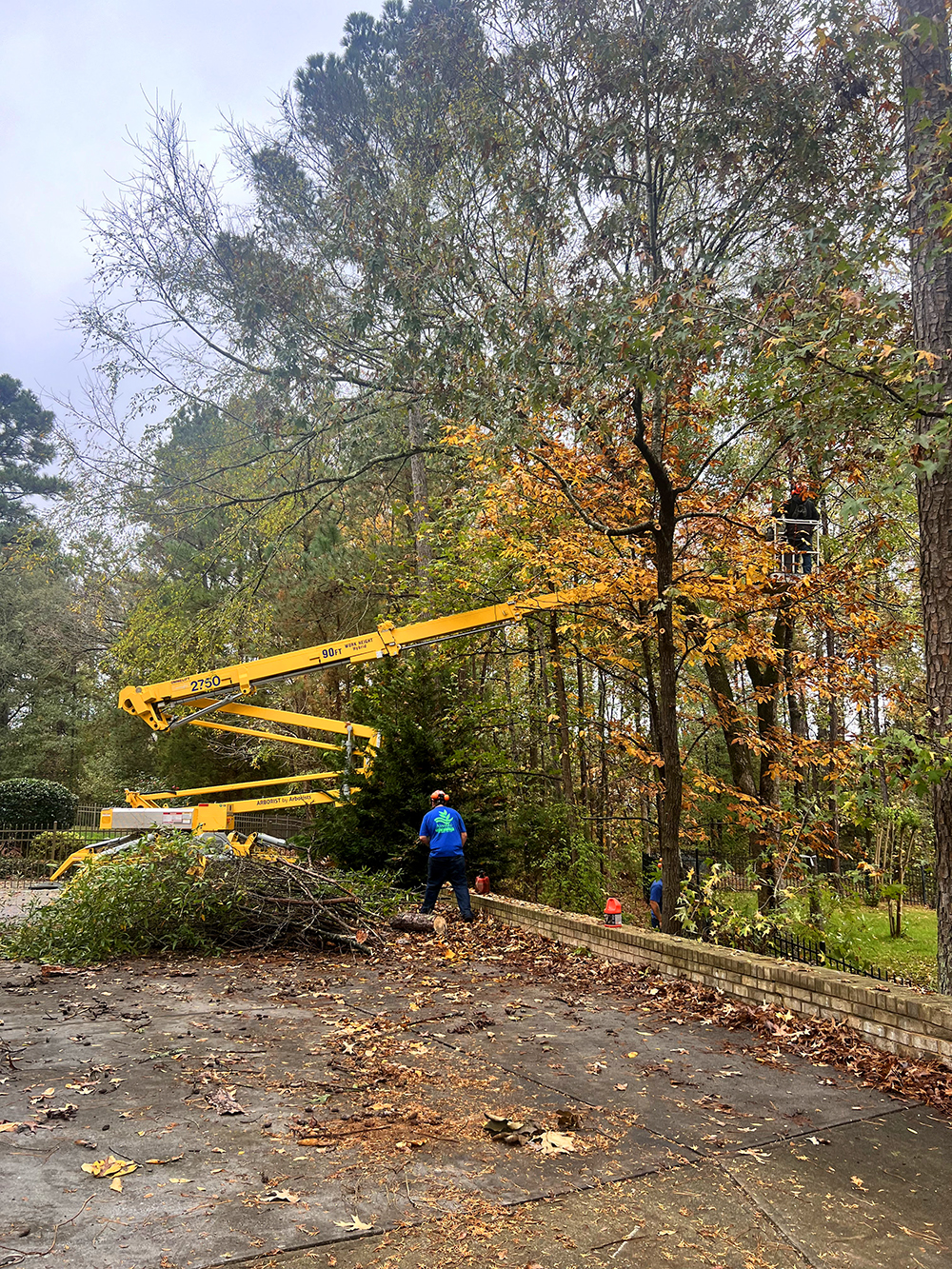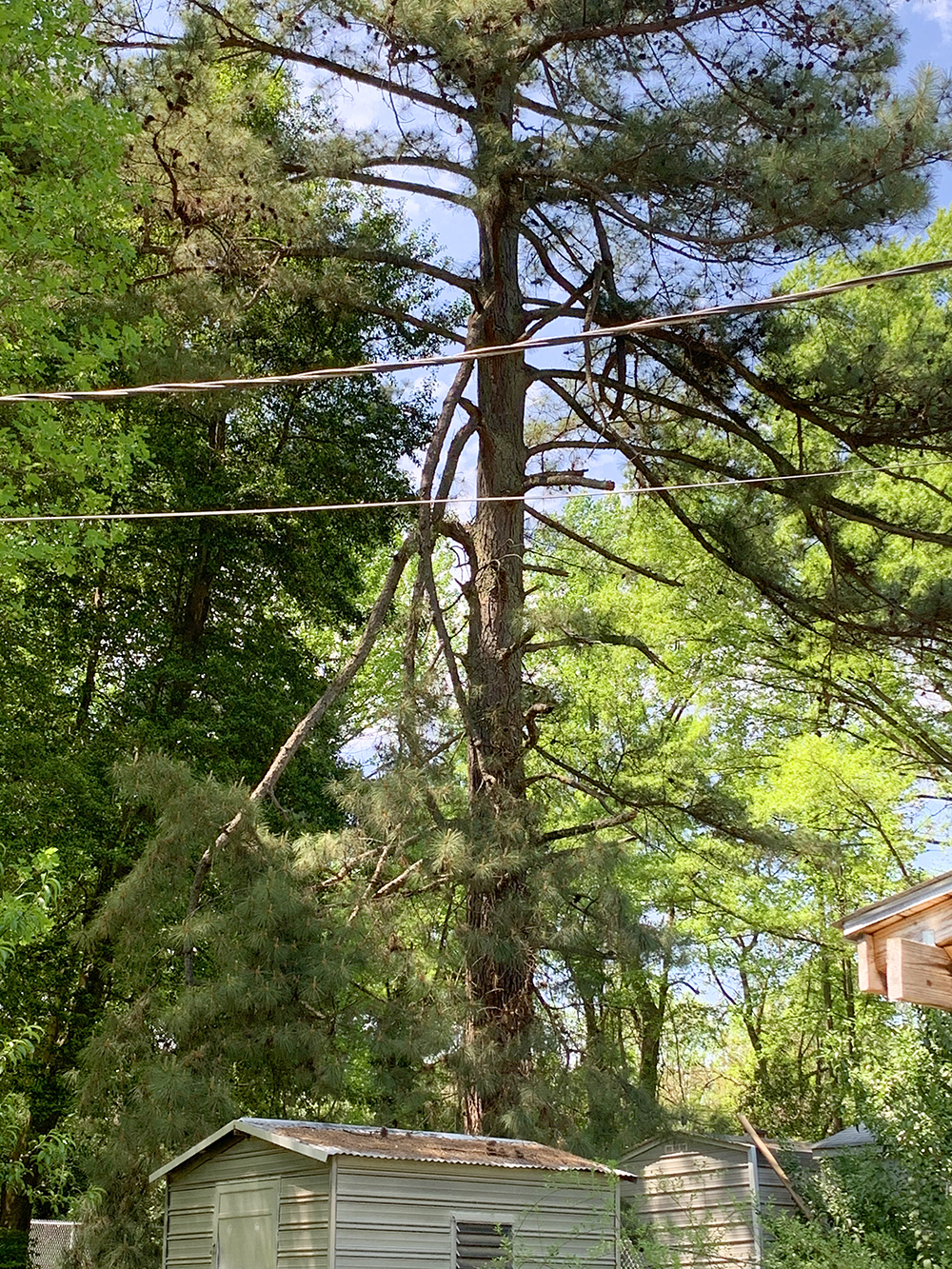Tree Pruning Service Rock Hill
Expert Tree Pruning for Healthier, Safer Trees
Our tree pruning services are designed to do more than just clean up your landscape—they’re about preserving the health, structure, and longevity of your trees. With over 15 years of experience serving Rock Hill and surrounding areas, our certified arborists understand how to prune with purpose, timing, and precision.
What Is Tree Pruning?

Tree pruning is the selective removal of specific branches to improve a tree’s health, structure, and overall growth. Unlike trimming, which focuses more on appearance, pruning is a proactive tree care method. It eliminates dead or diseased limbs, prevents overcrowding, improves airflow, and reduces risk from storm damage.
Every cut we make has a reason—whether it’s preventing decay, encouraging better shape, or promoting flower and fruit production. Pruning also protects surrounding property by minimizing the chances of falling limbs.
Why Niwaki Tree and Shrub?
- Certified, knowledgeable arborists who follow ANSI A300 pruning standards
- Services tailored to tree species and seasonal timing
- Pruning techniques that prioritize tree vitality and property safety
- Clean-up included—we leave your yard better than we found it
- Honest pricing and free consultations for all pruning jobs
We don’t guess—we assess. From young tree training to mature canopy thinning, we approach each project with care, ensuring your landscape remains safe, healthy, and beautiful.
Our Tree and Shrub Pruning Services:
- Deadwood Removal
- Crown Thinning
- Crown Raising (for clearance)
- Structural Pruning for Young Trees
- Hazard Limb Removal
- Shrub Pruning and Shaping
- Fruit Tree Pruning

When Should You Prune Trees?
Timing plays a major role in how effective pruning will be. Pruning at the wrong time can lead to poor regrowth, pest issues, or even long-term damage. The best time to prune depends on the type of tree, its current condition, and your pruning goals. For most trees in Rock Hill, SC, late winter to early spring is ideal—right before buds begin to swell and new growth starts.
This dormant season pruning helps trees recover faster, minimizes sap loss, and limits pest exposure. However, some trees benefit from seasonal-specific pruning. Flowering, fruit-bearing, and certain ornamental trees may need more careful timing.
Seasonal Tree Pruning Guide
Winter (Late Dormant Season – Jan to Early March)
- Best time for most structural pruning and major cuts
- Reduces stress on trees and prevents disease spread
- Ideal for hardwoods like oaks, maples, and elms
Spring (After Bloom – March to May)
- Light pruning for flowering trees after their bloom cycle
- Remove storm-damaged branches or early signs of disease
- Good time for shaping young trees and thinning shrubs
Summer (June to August)
- Useful for slowing unwanted growth or managing size
- Spot pruning to remove deadwood or sucker branches
- Prune only minimally to avoid stressing the tree in heat
Fall (September to November)
- Not generally recommended for major pruning
- Trees begin entering dormancy and cuts heal slower
- Best reserved for light touch-ups or safety concerns
Still not sure when to prune? Our certified arborists assess the tree type, age, and health status before recommending the right pruning plan. Whether you’re maintaining shape, improving health, or preparing for storms, Niwaki Tree and Shrub Care ensures pruning is done at the right time for lasting results.

Tree and Shrub Pruning FAQ
Not necessarily—but it depends on how much is removed and the tree’s health. Light summer pruning is safe for removing dead, damaged, or problem limbs. However, excessive pruning during hot months can stress the tree and lead to sunscald or poor regrowth. Our team ensures summer pruning is minimal and strategic to avoid harm.
Proper pruning improves air circulation through the canopy and reduces overcrowded limbs, helping trees regulate temperature more effectively. By removing dead or diseased branches, the tree can redirect energy to healthy parts, which strengthens its ability to withstand heat and drought conditions—common challenges in Rock Hill summers.
Tree pruning costs vary depending on tree size, location, and complexity of the job. On average, pruning services in Rock Hill range from $150 to $600 per tree. At Niwaki Tree and Shrub Care, we offer free estimates and competitive pricing to fit your property’s needs and budget.
Pruning allows more sunlight and air to reach fruit-bearing limbs, which leads to better flowering and higher fruit yield. It also removes weak or overcrowded branches that compete for nutrients. Proper annual pruning results in larger, healthier fruit and a more productive growing season.
After pruning, monitor the tree for signs of stress such as wilting, excessive sap, or discoloration. Water it thoroughly during dry spells, avoid fertilizing immediately, and keep an eye out for pests. Our team removes all debris and leaves your landscape clean, but ongoing care ensures the tree recovers quickly and thrives.



